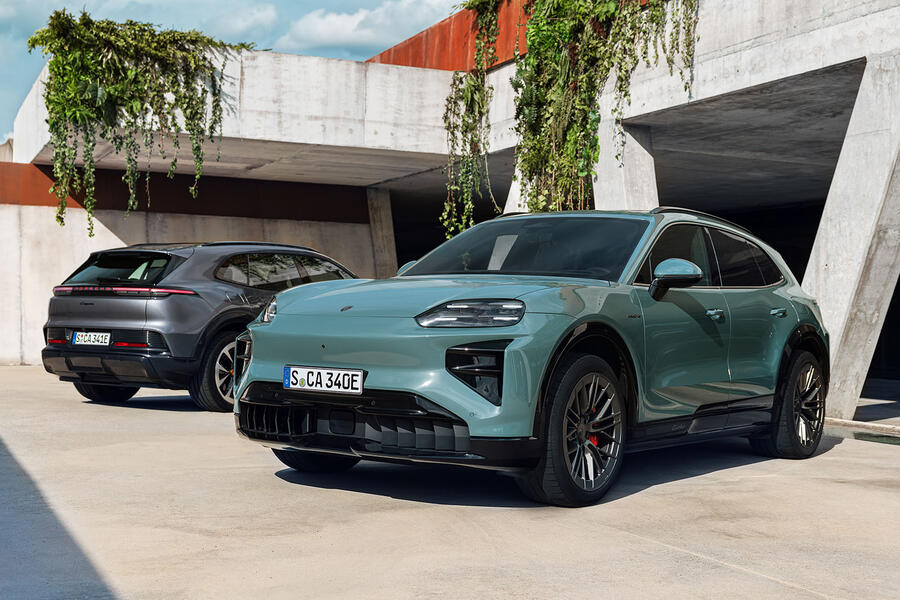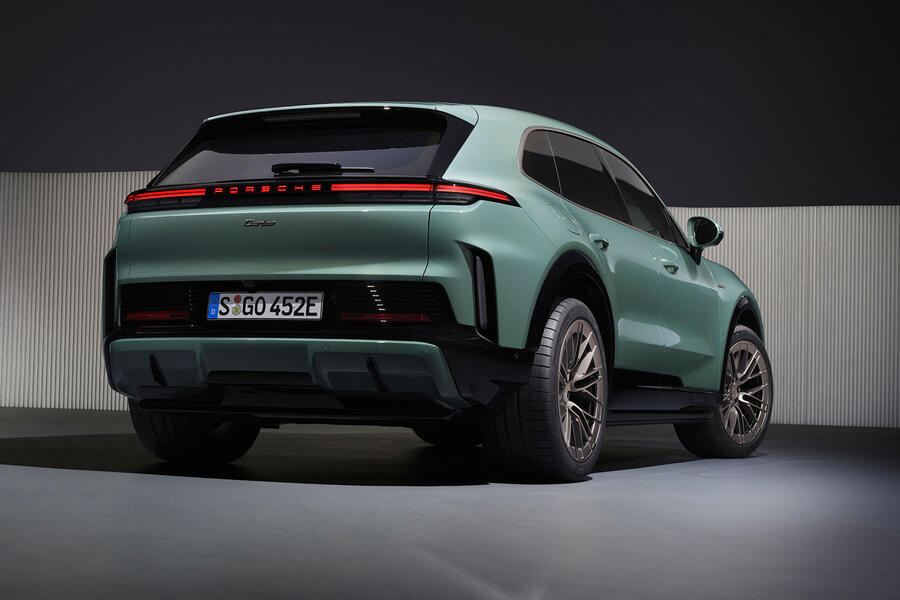Porsche has introduced the highly anticipated Cayenne Electric, marking its most potent offering yet, boasting 1140bhp. The German automob...
Porsche has introduced the highly anticipated Cayenne Electric, marking its most potent offering yet, boasting 1140bhp.
The German automobile manufacturer's third electric vehicle, following the Taycan and Macan Electric, is set to mark "the start of a new era."
The fourth-generation Cayenne marks the first time since the vehicle's introduction in 2002 that it is available without a traditional internal combustion engine.
This is due to its position on the EV-only PPE platform – a choice made initially as part of Porsche's ambitious goal for 80% of its models to be electric by 2030.
Nevertheless, during the development process last year, Porsche put those plans on hold, stating that the interest in electric vehicles was slower than anticipated. As a result, along with the new Cayenne Electric, Porsche will keep selling the third-generation Cayenne, which it will significantly update next year – marking its second major redesign in nine years.
This indicates that Porsche's top-tier SUV will be available with three power options (gasoline, hybrid, and electric) well beyond the 2030s.
With the Cayenne's electrification, we are achieving a new level of performance that establishes benchmarks for the future," said Porsche's marketing head Matthias Becker. "At the same time, we will keep advancing the Cayenne with efficient internal combustion and hybrid powertrain technologies throughout the next decade.
The Cayenne Electric is set to be available mid-next year, initially offered in two versions. The starting price is £83,200, while the highly potent top-of-the-line Turbo model is priced at £130,900.

POWERTRAIN
The fourth-generation Cayenne transitions from Volkswagen Group's MLB platform to the PPE platform, designed exclusively for electric vehicles, which also supports the Macan Electric and Audi Q6 E-tron.
Boasting a high-performance dual-motor system, equipped with launch control, the vehicle delivers an impressive 1140bhp and 1106lb ft of torque.
This translates to an impressive 0-62mph acceleration in 2.5 seconds and a 0-124mph time of 7.4 seconds. The maximum speed reaches 162mph.
This strength and velocity places the over-2.5-ton SUV on a level with hypercars like the Bugatti Veyron andAston Martin Valhalla.
It also surpasses the 1093bhp Taycan Turbo GTAs the most powerful Porsche road vehicle ever produced, it ranks as the third-fastest Porsche, tied with the newest 911 Turbo S. It is surpassed solely by the Taycan Turbo S (2.4 seconds) and Taycan Turbo GT (2.2 seconds).
Essence of this tremendous strength lies in the Cayenne TurboElectricThe rear motor, which includes direct oil cooling – an advancement inspired by motorsport that Porsche claims provides "high sustained power and efficiency".
Under regular driving conditions, the Turbo model generates up to 845bhp, and an additional 174bhp can be accessed (for 10 seconds at a time) using a 'push to pass' button located on the steering wheel.
The base model electric vehicle also features a dual-motor powertrain, but with a significantly lower output of 402bhp - the same as the Macan 4 Electric.
Due to the drop in performance, the 0-62mph acceleration time increases to 4.8 seconds, and the maximum speed is lowered to 143mph.
The maximum towing capacity for both models is listed at 3.5 tonnes.
In both cases, the energy comes from an 113kWh battery. The base model provides a maximum range of 398 miles, while the Turbo version offers up to 387 miles.
This places the Cayenne Electric ahead of competitors like the BMW iX and Lotus Eletre, as well as what is anticipated from the upcoming model.Range Rover Electric.
The PPE platform's 800V electrical system allows for charging rates of up to 390kW using a compatible DC charger. This enables a nearly 200-mile range boost (from 10% to 80% charge) in under 16 minutes. A maximum of 600kW of power can be generated through braking.recuperation.
Porsche states that the Cayenne Electric is the initial vehicle available for purchase to feature wireless charging; it can charge inductively at rates as high as 11kW.
To achieve this, owners will have to pay £2000 for a water-cooled charge receptor (weighing 15kg and mounted behind the protective underbody panel) and £3000 for a charging pad. All UK-spec Cayenne EVs will come pre-wired and equipped with the required hoses to accommodate the receptor.
Porsche is anticipated to introduce a single-motor, rear-wheel-drive variant of the Cayenne Electric following its release, similar to the approach taken with the Macan Electric.
The Turbo model features a special suspension system called Porsche Active Ride, which Porsche claims nearly eliminates body roll and pitch.
It also features a torque-vectoring system and a rear limited-slip differential. Both models include rear-wheel steering as well.

DESIGN
The latest Cayenne marks a significant change from the third-generation model, as part of a strategy to make it as aerodynamically efficient as possible.
This initiative is particularly evident at the front. Where the Cayenne's distinctive wide grille once was, there is now a solid panel and a lower hood line.
Several active aerodynamic elements have also been incorporated, aimed at enhancing efficiency and refining handling. These consist of adjustable cooling flaps on the front, air curtains, a dynamic roof spoiler, and at the back, a lower diffuser along with, specifically for the Turbo model, moving blades.
The updates result in the Cayenne Electric having a drag coefficient of 0.25 – which is 0.1 better than the Eletre. For comparison, the Mercedes-Benz CLA EQ, the most efficient electric vehicle available right now, features a drag coefficient of 0.21.
The new arrival also comes with an optional off-road package, which enhances approach angles and provides additional support—particularly around the battery—for use outside of paved surfaces.
It is 55mm longer than the vehicle it replaces, with a length of 4985mm, a width of 1980mm, and a height of 1674mm.
The additional length is primarily due to the new wheelbase (3023mm), with the most significant effect being an increase of 130mm in rear legroom.

INTERIOR
At the heart of the cabin lies Porsche's new Flow Display. This OLED panel integrates the instrument cluster with a 14.25-inch infotainment touchscreen (divided horizontally into two sections) and a optional 14.9-inch passenger display.touchscreenfor the most spacious cabin ever installed in a Porsche.
Similar to most Volkswagen Group vehicles, the majority of the car's controls are located on the central display, although Porsche has included physical buttons and switches for essential functions like the audio and climate control systems.
A heads-up display that spans 87 inches of the windshield is offered as an option.
The Cayenne Electric features what Porsche calls panel heating. This warmsnot only the seats as well as the armrests and door panels. The rear seats can be adjusted electronically.
The rear storage capacity is listed at 781 liters – nearly 200 liters greater than in the iX and over 90 liters more than in the Eletre. When the seats are folded down, this amount rises to 1588 liters. Moreover, there is an additional 90 liters of space beneath the hood.
Initially, customers have the option of 13 exterior color choices, nine different wheel styles varying in size from 20 inches to 22 inches, and 12 interior configurations. Additional features consist of five interior package options.



